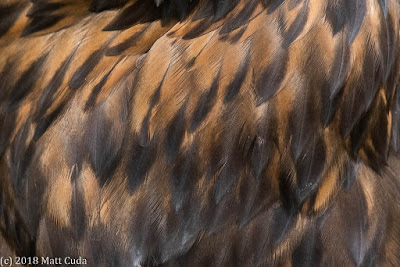FORSYTH COUNTY, NC - Spring is finally moving into a higher gear, and I see more signs of activity in the animal world. Up until now, songbirds have been reluctant to build their nests due to the bitter cold temperatures and windy conditions. It really, in many ways, has been a harsh and unforgiving winter in North Carolina, but there was still much to look forward to this Spring.
As part of my early spring activities, I often can be found photographing raptors at the Carolina Raptor Center for their event called PhotoWild. PhotoWild, is a special time set aside for wildlife photographers to have an opportunity to photograph raptors in a controlled environment. This equates to getting images that really are not generally possible in the wild. At least there is not a practical way to get these images. Furthermore, it is an opportunity to photograph species from other parts of the world. Finally, it is a great time to meet other photographers, talk a little shop and check out what gear and techniques they are using.
In this article, I thought I would layout how I approach photographing an event such as PhotoWild and share some of the images as examples.
Looking for the Full Length Portrait
The full length portrait is an image, which is composed to show the entire bird. It might also have other compositional elements added to make the shot more interesting. Below is a shot of a barred owl where I not only utilize a full length portrait, but use the foliage to provide a more interesting framing element. Note the tree to the left of the owl, providing a framing element, and the leaves wrapping around him in the foreground also support framing.
As part of my early spring activities, I often can be found photographing raptors at the Carolina Raptor Center for their event called PhotoWild. PhotoWild, is a special time set aside for wildlife photographers to have an opportunity to photograph raptors in a controlled environment. This equates to getting images that really are not generally possible in the wild. At least there is not a practical way to get these images. Furthermore, it is an opportunity to photograph species from other parts of the world. Finally, it is a great time to meet other photographers, talk a little shop and check out what gear and techniques they are using.
In this article, I thought I would layout how I approach photographing an event such as PhotoWild and share some of the images as examples.
Looking for the Full Length Portrait
The full length portrait is an image, which is composed to show the entire bird. It might also have other compositional elements added to make the shot more interesting. Below is a shot of a barred owl where I not only utilize a full length portrait, but use the foliage to provide a more interesting framing element. Note the tree to the left of the owl, providing a framing element, and the leaves wrapping around him in the foreground also support framing.
Looking for the Close-up Portrait
Next, I begin looking for close-up portrait to give the viewer a more detailed and often times unseen image of the raptor. With close-up images, sharpness and higher megapixel images can really make them pop. Below is an image of a male American bald eagle.
Looking for the Extreme Close-up
Again, for this type of shot, think detail. Think about making images you simply cannot make very easily in the wild. Look for feather detail and talon detail. Below is an image showing the detail in the golden eagle's feathers.
Looking for Gesture
Gesture is what makes images unique. It can be anything from an unusual look from your subject, to yawning, eating and anything else that evokes emotion. This is really what I want every time I go out to photograph a subject. Whether it is in captivity or the wild, this is a must for any photographer to be able to capture. Below is an example of gesture. This turkey vulture is opening his mouth very wide and is something I have never witnessed from a vulture in the past. A perfect opportunity, and one to never waste. Patience is key here. When everyone else is leaving, you stay and work the subject. Good things often happen to those who wait.
I hope you enjoyed this months blog. There is much on the horizon at Matt Cuda Nature Photography. To be specific, the time has come for the continuation of the Hummingbird Project and the Bluebird projects. These two projects generally keep me busy from May through June.
God Bless,
Matt Cuda
God Bless,
Matt Cuda


















0 comments:
Post a Comment